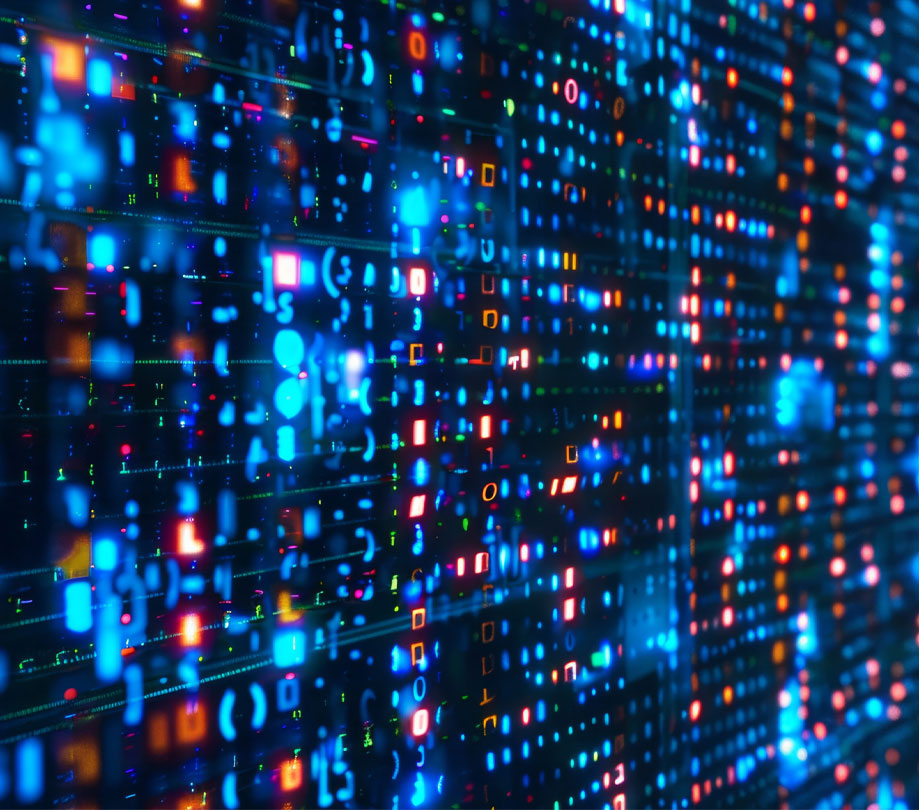Developers outlook 2018: big technologies, big changes
Tuesday, March 6, 2018

|
Jason Thane |
For mobile developers artificial Intelligence, virtual Intelligence, IoT and more big changes to come this year.
In 2018 changes in the technology landscape are creating fantastic opportunities for innovation in design and engineering. For decades, computers featured a TV screen for output, a keyboard for text input, and a mouse to point and click. Just a few years ago, the iPhone transformed everything by putting the first well-designed computer with a touchscreen in our pockets. Since then, we have been using computing everywhere we go, and the benefits have been tremendous.
In 2018 apps and interfaces will break the paradigm again. Personal computing is engaged in another transformation that will produce both value and disruption on a similar scale. Powered by several technologies in concert, including machine learning as a central theme, personal computing is poised to become more convenient, more ubiquitous, more automatic, and more user-friendly than ever before.
The user interface, it is a-changing. If the smartphone broke computing out of the confines of the home and office, these technologies together are now breaking computing through the 'fourth wall' of your device's screen, to be present and useful in the space we live in. Now let's pull out the crystal ball and make some specific predictions:
This year, we predict that Apple will get closer to the release of a category-leading Augmented Reality (AR) headset or wearable, based on iOS. If we're lucky, they might even release it! Apple is viewing Augmented Reality as the next major personal computing platform, and we agree. So far, ARKit only works by projecting virtual objects onto the image captured by an iOS device's rear camera, but the platform appears to be preparing to support a head-mounted display of some kind. ARKit with CoreML for object identification and tracking on iOS together show how valuable machine learning will be to enabling high-fidelity augmented reality applications.
Apple will continue their relentless innovation and investment into the iOS platform and developer tools, and this year we'll see widespread adoption of Swift 4 by developers. Apple will also integrate their newly-acquired BuddyBuild continuous integration platform with the Xcode toolchain. Now that they're owned by Apple, BuddyBuild will end Android support in March 2018.
Android developers will try selling Instant Apps this year, for users who are not interested in installing apps before they run them. Though Instant Apps run without installation, they can still use the Android API, and they're built with Android Studio. Android developers will also try out the Android Things IoT toolkit, which enables rapid prototyping with turnkey hardware. And we're excited to finally see the release of the next generation Daydream View, which leading Android AR apps will use with ARCore.
Android tools also continue to evolve rapidly. As Kotlin fans, we hope to see Kotlin surpass Java as the language of choice for Android apps this year. Developers will increasingly rely on the leading MVVM and MVI architectures in Android apps, as well as tools like Realm, Dagger 2, RxJava 2, and Retrofit.
Though there will definitely still be a lot of Angular applications out there on the web, we predict new development to highly favor React JS this year. The newcomer Vue.js should continue to gain market share at the expense of Angular. Google's Progressive Web Appsdoctrine will help make web apps versatile, responsive, and usable. Progressive Web Apps will not replace the need for native iOS and Android apps, as Apple and Google continue to make large investments into the sophistication and capabilities of the native platforms. Neither will React Native, which we see beginning to fade away.
Javascript continues to be the lingua franca of web applications, and will be used more and more by other languages as a universal runtime. Statically typed variants like TypeScript and Flow continue to gain popularity, along with relative newcomers like Elm, CoffeeScript 2, and our favorite CoffeeScript successor, CaffeineScript.
Enterprise services will continue the migration in 2018 to the AWS and Azure platforms, benefitting from the robust management, compliance, and audit capabilities offered on both platforms. Applications built for the cloud begin to heavily rely on machine learning services from AWS, Azure, and others like Algorithmia.
Chromebook gains market share, and powerful apps. Chromebook grows to dominate the education segment, along with others where users are attracted to the simplicity, speed, and low-cost value proposition offered by Chromebook. Google's Pixelbook leads the way for hardware quality at the highest price point, with OEMs offering a wide variety of low-cost options.
Chromebook apps get more and more interesting in 2018, due to robust capabilities available on the Chrome App Platform and increased interest from the developer community.
We predict Voice control will become ubiquitous in 2018, and this will be one of the most visible and exciting uses of artificial intelligence from the consumer's perspective. Smart home devices, based first on Amazon Alexa, second on the Google Assistant, sold very well during the 2017 holiday season. We expect intense competition in this space in 2018, as Apple's Siri and Microsoft Cortana seek their place in the market.
Voice control will soon offer much of the utility of touch-screen interfaces today, though they're never going to be as private. Integrating voice control into the next generation of apps may require that developers be well-versed in the underlying technologies, such as AI, Machine Learning, and Natural Language Processing.
There's a whole stable of exciting VR hardware and software platforms coming in 2018, including Vive Pro, Magic Leap, Microsoft's rumored Hololens 3, and if we're lucky, something cool from Apple. Though it looks like the form factor will be wide, the PiMax 8K promises to offer 4k resolution in each eye with a 200 degree field of view. We're excited to try this one out if our video cards can push all those pixels at 90 fps.
We'll see a growing maturity of the user interface in both Augmented Reality (AR) and Virtual Reality (VR), to better account for human factors, and accessibility, while also making them credible personal computing platforms. Already, designers and engineers are in the process of reinventing all the conventions, assumptions and standards used to build user interfaces for the coming generation of VR applications. Unity remains the platform of choice for AR/VR across the full stable of hardware. Developers will take advantage of Physically Based Rendering (PBR) on Unity to create some really amazing experiences.
Machine Learning and AI are now being used to enhance and augment nearly every kind of software we can think of, and in 2018 we'll start to see some new and exciting capabilities in applications built this way. Uses will include computer vision, object detection and tracking, text comprehension, data analytics, voice control, and much more.
Developers will use machine learning via CoreML in iOS apps, the Google Neural NetworkAPI (NNAPI), the Microsoft Cognitive Services API, and AWS ML. We're also excited for breaking news on Vertex.ai's PlaidML deep learning engine to run neural nets on a wide variety of devices.
This year, we're going to see a lot of improvements in the user experience offered by Internet of Things (IoT) devices, as well as in the setup, management, and security shortcomings of the past. In 2018, so many products are set to become connected computing devices, that we hope the industry moniker 'Internet of Things' fades away. From the consumer perspective, connecting a new product to Wifi or Bluetooth becomes more usual and normal, and developers will build more and more interesting applications with these connected devices.
We view blockchain as an innovation that is fundamentally about social and economic change and disruption. Blockchain technology can now remove the need for a single trusted institution to trust and control various systems, instead imparting trust in decentralized fashion to the size of the network and the strength of the cryptography involved. This has created the potential for a whole category of new applications to be created on top of the blockchain, and we expect developers to focus on the Ethereum blockchain and platform to pilot these ideas in 2018.
All the exciting and disruptive products built on these technologies will be created by teams that can integrate multiple platforms by leveraging cross-disciplinary teams that follow sustainable software engineering practices like DevOps, continuous integration, test architecture and automation, and collaborative team practices. Since so many products will require the integration of multiple platforms and disciplines, learning from and teaching one another within a team has never been more important than it will be in 2018.
This content is made possible by a guest author, or sponsor; it is not written by and does not necessarily reflect the views of App Developer Magazine's editorial staff.
In 2018 apps and interfaces will break the paradigm again. Personal computing is engaged in another transformation that will produce both value and disruption on a similar scale. Powered by several technologies in concert, including machine learning as a central theme, personal computing is poised to become more convenient, more ubiquitous, more automatic, and more user-friendly than ever before.
The most impactful technology products of 2018 are going to feature a convergence of several of the following technologies:
- Software built on the iOS, Android, and React JS platforms
- Machine Learning and Artificial Intelligence
- Augmented and Virtual Reality built on Unity
- IoT / Internet of Things
- AWS and Azure Cloud Platforms
- Sophisticated Voice Control
The user interface, it is a-changing. If the smartphone broke computing out of the confines of the home and office, these technologies together are now breaking computing through the 'fourth wall' of your device's screen, to be present and useful in the space we live in. Now let's pull out the crystal ball and make some specific predictions:
Apple embraces Augmented Reality.
This year, we predict that Apple will get closer to the release of a category-leading Augmented Reality (AR) headset or wearable, based on iOS. If we're lucky, they might even release it! Apple is viewing Augmented Reality as the next major personal computing platform, and we agree. So far, ARKit only works by projecting virtual objects onto the image captured by an iOS device's rear camera, but the platform appears to be preparing to support a head-mounted display of some kind. ARKit with CoreML for object identification and tracking on iOS together show how valuable machine learning will be to enabling high-fidelity augmented reality applications.
Apple will continue their relentless innovation and investment into the iOS platform and developer tools, and this year we'll see widespread adoption of Swift 4 by developers. Apple will also integrate their newly-acquired BuddyBuild continuous integration platform with the Xcode toolchain. Now that they're owned by Apple, BuddyBuild will end Android support in March 2018.
Android gets Instant Apps.
Android developers will try selling Instant Apps this year, for users who are not interested in installing apps before they run them. Though Instant Apps run without installation, they can still use the Android API, and they're built with Android Studio. Android developers will also try out the Android Things IoT toolkit, which enables rapid prototyping with turnkey hardware. And we're excited to finally see the release of the next generation Daydream View, which leading Android AR apps will use with ARCore.
Android tools also continue to evolve rapidly. As Kotlin fans, we hope to see Kotlin surpass Java as the language of choice for Android apps this year. Developers will increasingly rely on the leading MVVM and MVI architectures in Android apps, as well as tools like Realm, Dagger 2, RxJava 2, and Retrofit.
React JS remains the leading platform for web app development.
Though there will definitely still be a lot of Angular applications out there on the web, we predict new development to highly favor React JS this year. The newcomer Vue.js should continue to gain market share at the expense of Angular. Google's Progressive Web Appsdoctrine will help make web apps versatile, responsive, and usable. Progressive Web Apps will not replace the need for native iOS and Android apps, as Apple and Google continue to make large investments into the sophistication and capabilities of the native platforms. Neither will React Native, which we see beginning to fade away.
Javascript continues to be the lingua franca of web applications, and will be used more and more by other languages as a universal runtime. Statically typed variants like TypeScript and Flow continue to gain popularity, along with relative newcomers like Elm, CoffeeScript 2, and our favorite CoffeeScript successor, CaffeineScript.
AWS and Azure are recognized as mature, widespread cloud adoption continues.
Enterprise services will continue the migration in 2018 to the AWS and Azure platforms, benefitting from the robust management, compliance, and audit capabilities offered on both platforms. Applications built for the cloud begin to heavily rely on machine learning services from AWS, Azure, and others like Algorithmia.
Chromebook gains market share, and powerful apps. Chromebook grows to dominate the education segment, along with others where users are attracted to the simplicity, speed, and low-cost value proposition offered by Chromebook. Google's Pixelbook leads the way for hardware quality at the highest price point, with OEMs offering a wide variety of low-cost options.
Chromebook apps get more and more interesting in 2018, due to robust capabilities available on the Chrome App Platform and increased interest from the developer community.
Voice Control gets really good.
We predict Voice control will become ubiquitous in 2018, and this will be one of the most visible and exciting uses of artificial intelligence from the consumer's perspective. Smart home devices, based first on Amazon Alexa, second on the Google Assistant, sold very well during the 2017 holiday season. We expect intense competition in this space in 2018, as Apple's Siri and Microsoft Cortana seek their place in the market.
Voice control will soon offer much of the utility of touch-screen interfaces today, though they're never going to be as private. Integrating voice control into the next generation of apps may require that developers be well-versed in the underlying technologies, such as AI, Machine Learning, and Natural Language Processing.
Virtual and Augmented Reality will knock our socks off.
There's a whole stable of exciting VR hardware and software platforms coming in 2018, including Vive Pro, Magic Leap, Microsoft's rumored Hololens 3, and if we're lucky, something cool from Apple. Though it looks like the form factor will be wide, the PiMax 8K promises to offer 4k resolution in each eye with a 200 degree field of view. We're excited to try this one out if our video cards can push all those pixels at 90 fps.
We'll see a growing maturity of the user interface in both Augmented Reality (AR) and Virtual Reality (VR), to better account for human factors, and accessibility, while also making them credible personal computing platforms. Already, designers and engineers are in the process of reinventing all the conventions, assumptions and standards used to build user interfaces for the coming generation of VR applications. Unity remains the platform of choice for AR/VR across the full stable of hardware. Developers will take advantage of Physically Based Rendering (PBR) on Unity to create some really amazing experiences.
Machine Learning shows up EVERYWHERE.
Machine Learning and AI are now being used to enhance and augment nearly every kind of software we can think of, and in 2018 we'll start to see some new and exciting capabilities in applications built this way. Uses will include computer vision, object detection and tracking, text comprehension, data analytics, voice control, and much more.
Developers will use machine learning via CoreML in iOS apps, the Google Neural NetworkAPI (NNAPI), the Microsoft Cognitive Services API, and AWS ML. We're also excited for breaking news on Vertex.ai's PlaidML deep learning engine to run neural nets on a wide variety of devices.
Let's stop calling them Things.
This year, we're going to see a lot of improvements in the user experience offered by Internet of Things (IoT) devices, as well as in the setup, management, and security shortcomings of the past. In 2018, so many products are set to become connected computing devices, that we hope the industry moniker 'Internet of Things' fades away. From the consumer perspective, connecting a new product to Wifi or Bluetooth becomes more usual and normal, and developers will build more and more interesting applications with these connected devices.
And then there's blockchain.
We view blockchain as an innovation that is fundamentally about social and economic change and disruption. Blockchain technology can now remove the need for a single trusted institution to trust and control various systems, instead imparting trust in decentralized fashion to the size of the network and the strength of the cryptography involved. This has created the potential for a whole category of new applications to be created on top of the blockchain, and we expect developers to focus on the Ethereum blockchain and platform to pilot these ideas in 2018.
Conclusion
All the exciting and disruptive products built on these technologies will be created by teams that can integrate multiple platforms by leveraging cross-disciplinary teams that follow sustainable software engineering practices like DevOps, continuous integration, test architecture and automation, and collaborative team practices. Since so many products will require the integration of multiple platforms and disciplines, learning from and teaching one another within a team has never been more important than it will be in 2018.
This content is made possible by a guest author, or sponsor; it is not written by and does not necessarily reflect the views of App Developer Magazine's editorial staff.

Become a subscriber of App Developer Magazine for just $5.99 a month and take advantage of all these perks.
MEMBERS GET ACCESS TO
- - Exclusive content from leaders in the industry
- - Q&A articles from industry leaders
- - Tips and tricks from the most successful developers weekly
- - Monthly issues, including all 90+ back-issues since 2012
- - Event discounts and early-bird signups
- - Gain insight from top achievers in the app store
- - Learn what tools to use, what SDK's to use, and more
Subscribe here











